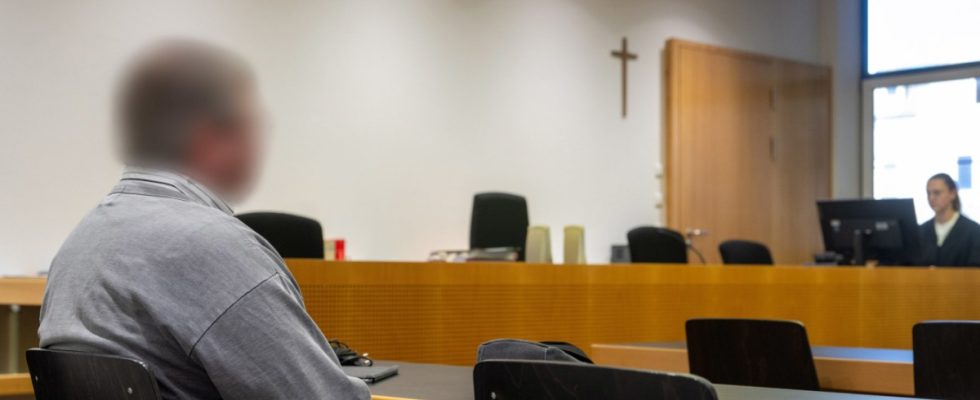There are complicated terms that the three experts are tossing around in this process at the Augsburg District Court: compensatory growth, loss of vitality, root enema. It is also about the particularly dangerous fire crust fungus because it decomposes wood and is difficult to detect. But in the end, as the judge says, the big question is: Was it clear to the accused tree inspector what the tree looked like when it fell at a playground in Augsburg and killed a little girl who was just with her mother rocked on a seesaw?
The experts have different opinions, which was reason enough for the defendant’s defense attorney to object to a sentence for negligent homicide combined with negligent bodily harm. The resulting process was now monitored nationwide by municipalities and tree experts, because it was also important to shed light on this question, which can hardly be answered clearly: When are trees considered at risk of falling over, and when do they have to be felled as a precaution?
It was a morning in July 2021 when a mother and her two daughters were on the playground. At around 10:45 a.m., the 23-meter-high and mighty maple tree fell onto the seesaw 13 meters away, burying the 20-month-old girl and her mother. The older daughter had to watch everything. The toddler died of his injuries in the university hospital that evening, the mother suffered bruises to her leg and a broken shoulder blade and collarbone.
It is very important to his client to express his sincere condolences to the family, says the tree inspector’s defense attorney at the beginning of the hearing. The 58-year-old has been unable to work since the accident and is undergoing psychotherapeutic treatment, so he does not want to say anything himself and does not want to answer any questions during the trial. Just this much, in the words of his defense attorney: He last examined the tree in May 2020. As with all previously carried out regular inspections, there were no indications that the stability or traffic safety was impaired – not even after he had tapped the trunk with a soft-faced hammer. From the sound, experts can assess whether the tree is hollow inside and possibly affected by rot. A fruiting body of the fire crust fungus was not visible during the inspection.
The court-appointed expert agrees with the defendant on this point. The fungal infestation was small and barely noticeable, but from his point of view that’s not the point. Some other suspicious features were visible on the tree, which the inspector also saw and therefore had to initiate further investigations. Above all, the tree grew so noticeably slanted, at an angle of 45 degrees, that it was the eye-catcher in the entire playground. Now, as the experts explain, a tree reacts to problems with what is known as compensatory growth. So it tries to repair itself, for example by increasing its growth in one place to compensate for a damaged area. But if you don’t know whether the compensation is enough, the expert says, there are only two options: cut down the tree or arrange for further investigations.
In July 2021, this tree fell onto a playground, and a small child suffered such serious injuries that he later died in a clinic.
(Photo: Augsburg Fire Department/dpa)
“A tree inspector is under a lot of stress because cutting down a tree is quickly criticized by the public.” In the case of this tree, however, the doubts should have been so great that the inspector should have at least ordered a measurement by drilling. The expert is certain that in any case it would have become clear that the tree had to be removed. It is this argument that earned the responsible inspector the penalty for negligent homicide. However, the public prosecutor’s office apparently recognized that the man was only slightly guilty: the penalty order only provided for a fine, suspended on probation.
“You reach the limits of what is reasonable for municipalities.”
But it is also this argument that the other two experts, commissioned by the criminal police and the defense, do not share. They base their expertise on the so-called tree control guidelines, which even serve as instructions for Augsburg tree inspectors. Accordingly, abnormalities on the tree are undisputed, but they do not automatically mean that there is danger. If such abnormalities required more detailed investigations, hundreds of trees would be affected in one fell swoop. “You reach the limits of what is reasonable for municipalities.”
Because of the large number of trees that need to be checked, there is always a residual risk. Years of leaning, characteristics on the roots or trunk that deviate from the rule could also mean that the compensations caused by the tree are working. In this respect, the fungal infestation in particular would make a decisive difference in the assessment of the control – but everyone agrees that it was not visible to the 58-year-old.
In the end, this argument was also followed by the court and the public prosecutor, who also called for an acquittal “in case of doubt for the defendant”. The co-plaintiff, who represents the family of the murdered girl, explicitly does not make a request: “Nothing can bring the daughter back.”
So when are trees considered at risk of falling? This cannot be answered across the board. In the overall consideration of this case, the inspector did his job correctly, says the judge. In order to recognize damage and thus danger, one would have had to look into the tree. However, the arch during regular controls must not be overstretched. However, it indirectly gives the city and thus other municipalities some food for thought: whether it is generally advisable to prophylactically remove such a sloping tree from playgrounds was not within the tree inspector’s power to decide.

